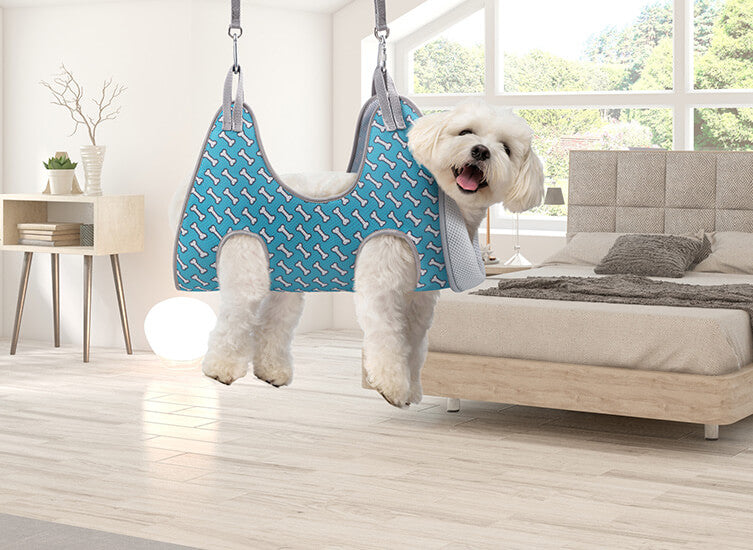Undergoing surgery is a significant event in a dog's life, whether it's for a routine procedure such as spaying or neutering, or something more complex like orthopedic surgery. The period following surgery is critical for your dog's health and recovery. Success hinges not only on the skills of the veterinary surgeon but also on the care provided at home by the dog’s owner. This guide aims to provide dog owners with essential knowledge and tools to ensure a smooth and safe recovery for their furry family member.
Monitoring for Complications

Vigilance in monitoring for any signs of complications post-surgery is crucial for your dog's health. Key signs that warrant immediate veterinary attention include:
-
Excessive Swelling: While some swelling is normal, excessive or increasing swelling can be a sign of infection or other complications.
-
Heat at the Incision Site: An incision site that becomes hot to the touch, especially if it's also red or discharging, could indicate an infection.
-
Pain That Doesn't Improve: If your dog's discomfort seems to increase or doesn't improve over time, despite pain medication, it's time to call the vet.
-
Seromas: These are pockets of fluid that can form at the surgery site, potentially requiring drainage if they don't resolve on their own.
-
Incision Lumps: Some lumps are normal, especially if sutures are being absorbed by your dog's body, but any lump that grows or becomes painful should be evaluated.^1
Medication Management

Proper medication management is critical. This includes:
-
Administering Pain Relief: Follow your vet's instructions precisely for any prescribed pain relief medication.
-
Dealing with Antibiotics: Complete the full course of antibiotics to prevent resistant infections.
-
Sedatives and Anti-Anxiety Medication: These may be prescribed to help your dog stay calm and should be used as directed.
-
Non-Pharmacological Strategies: Complement medication with comfortable resting areas, ice packs or heat therapy, and gentle massage or physical therapy as advised.^3
Wound and Incision Care

Proper care is essential for the surgical site:
-
Keep the Wound Clean: Follow your vet's instructions for cleaning the site.
-
Use an Elizabethan Collar: Prevent your dog from licking or biting the wound to avoid infection.
-
Monitor the Wound: Regularly check for signs of infection and contact your vet if you notice any.
-
Change Bandages as Advised: Keep the area clean by changing bandages according to your vet's instructions.^4
Physical Therapy and Mobility
Careful management of physical activity and introduction of physical therapy are vital:
-
Initially restrict movements to prevent strain on the surgery site.
-
Introduce gentle range-of-motion exercises, gradually increasing mobility under a vet's guidance.
-
Balance activities with sufficient rest, watching for signs of discomfort or reluctance.^5
Behavior Management and Mental Stimulation
Managing your dog's behavior and keeping them mentally stimulated is crucial:
-
Behavior Management: Address changes in behavior, including aggression, with patience and understanding.
-
Mental Stimulation: Engage your dog in safe, suitable activities such as food-dispensing toys or puzzles and scent work with snuffle mats.^6
Nutrition, Hydration, and Rest
-
Nutrition: Your vet may recommend adjusting your dog's diet to ensure they receive necessary nutrients.
-
Hydration: Keep fresh water available at all times and monitor your dog for signs of dehydration.
-
Rest: Provide a quiet, comfortable resting area and minimize stimulation to facilitate healing.^8
Creating a Stress-Free Recovery Environment
Create a peaceful and comfortable recovery space, keeping the area free from hazards, and engaging your dog with gentle petting or calm talking to offer reassurance.^9
Follow-Up Care and Ongoing Support

-
Follow-Up Visits: Regular check-ups are essential to assess healing and adjust care as needed.
-
Rehabilitation and Physical Therapy: These may be recommended to restore mobility and strengthen muscles.
-
Long-Term Care: Adjustments to diet, activity level, or lifestyle may be necessary for a healthy recovery.
-
Emotional Support: Provide patience, affection, and understanding to help ease your dog through the recovery process.^10
Recovery doesn't happen overnight, but with consistent care and attention, your dog can enjoy a full and active life post-surgery.
Here are some more videos for you to check out!


















